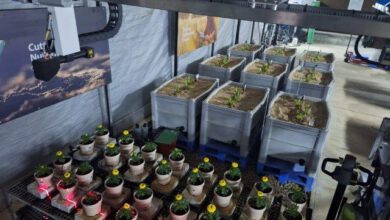Studying the effect of plant nutrition and variety on the nutritional value of teff grown in israel

Zipora tietel,a* ella simhon,akelemgashu,b uri yermiyahub
*correspondence to: z. tietel, food quality and safety, agricultural research organization, gilat research center, israel. e-mail: tietel@agri.gov.il
afood quality and safety, agricultural research organization, gilat research center, m.p. negev, 85280, israel.
b soil chemistry, plant nutrition and microbiology, agricultural research organization, gilat research center, m.p. negev, 85280, israel.
Introduction
Teff (eragrostistef) is an annual tropical cereal, indigenous to ethiopia, and a staple food for the majority of ethiopians.teff is rich in nutritionally important minerals, and more nutritious than most western staple cereals. teff contains satisfying levels of vitamins c, a and b, and has an excellent amino acid composition, in addition to desired and essential unsaturated fatty acids. additionally, it also contains polyphenols, mainly phenolic acids. teff is also a gluten free cereal, high in polyphenols and dietary crude fiber, with a low glycemic index(1, 2).
In recent years there is a growing interest in teff, mainly due to its being gluten free, and therefore in high demand by the celiac patients community and also by health food consumers, thanks to its high nutritional values. additionally, israel has a unique agreement with the ethiopian government, which allows import of teff, for the use of the jewish ethiopian community in israel. the growing local and worldwide demand is accompanied by a larger variety of teff products available on the shelves, including flour, bread, puffed teff cakes and pasta. today, teff is grown commercially in israel, mainly in the israeli negev, but also in the golan heights.
The aim of our research was to study the effect of nitrogen (n), phosphorus (p) and potassium (k) fertilization and variety (white and red commercial varieties ) on the nutritional value of teff varieties grown in israel.
Materials and methods
Red and white teff seeds were obtained from the israeli gene bank, and plants were grown in pots in perlite medium , in a greenhouse located at the gilat center for agricultural research. plants were exposed to 5 n levels in an irrigation solution (10,20,40,80 and 120 ppm-parts per million), 4 p levels (1,3,6, and 12 ppm) and 4 k levels (10,20,40, and 80 ppm), as previously described (3). plants were grown to full maturity and harvested manually. mineral concentration was measured using colorimetric methods and an atomic absorption instrument, and total phenolic concentration was measured using the folin-ciocalteu method . additionally, anti-oxidative capacity of teff grains was evaluated using teac-abts method, and fatty acid composition analysis was performed using a gc-ms instrument. measurements were taken in three replicates.
Results and discussion
Our results show that for increasing n (fig. 1a), p (fig 1b) and k levels (fig 1c) fertilization, a significant decrease in zinc contents was observed, mainly in the red variety. in addition, n and p fertilization resulted in a significant decrease in manganese contents, in both red and white cultivars (data not shown).
in addition, results show that polyphenol contents increased with increasing n fertilization in both white and red varieties (fig 2a and 2b, respectively). nevertheless, fertilization had little or no effect on antioxidative capacity of teff grains. fatty acid analysis showed that in general, n fertilization resulted in an increase in polyunsaturated fatty acids (pufa) (fig. 3a), accompanied by a decrease in saturated fatty acids (sfa) (fig. 3b), with no significant changes in monounsaturated fatty acid (mufa) levels (fig. 3c). these results might indicate that high n levels induced a stress response in teff plants, as pufa were reported to increase the plant’s resistance to stress conditions, probably as a precursor of defense oxylipins(4).
figure 1. effect of n (a), p (b) and k (c) on zinc contents in teff seeds.
figure 2. effect of n fertilization on total polyphenol contents in white (a) and red (b)teff grains grown in israel.
Today’s consumers are aware of the health benefits of food, and are willing to pay higher prices for healthier foodstuffs (5). owing to its nutritional advantages and to its being gluten free, teff consumption is increasing globally, and it is in high demand by celiac and diabetes patients, as well as by health-food customers. research of teff is very limited, and current information is highly valuable since it has direct practical implications on teff beneficial health properties. we showed that plant nutrition regime might greatly affect teff grains nutritional composition; in addition, it might thus also affect consumers’ diet, and specifically vegetarians and vegans, sometimes deficient of zinc and manganese. our results indicate that fertilization should be a delicate balance between physiological needs, yield outputs and nutritional outcomes. hence, this research is relevant to both consumers and growers, and has implications over public health.
Ccknowledgements
this work was funded by the center for fertilization and plant nutrition (cfpn), www.cfpn.center
references
1. gebremariam, m. m.; zarnkow, m.; becker, t., teff (eragrostis tef) as a raw material for malting, brewing and manufacturing of gluten-free foods and beverages: a review. journal of food science and technology-mysore 2014,51, 2881-2895.
2. kotásková, e.; sumczynski, d.; mlček, j.; valášek, p., determination of free and bound phenolics using hplc-dad, antioxidant activity and in vitro digestibility of eragrostis tef. journal of food composition and analysis 2016,46, 15-21.
3. yermiyahu, u.; ben-gal, a.; keren, r.; reid, r., combined effect of salinity and excess boron on plant growth and yield. plant and soil 2008,304, 73-87.
4. mithöfer, a.; schulze, b.; boland, w., biotic and heavy metal stress response in plants: evidence for common signals. febs letters 2004,566, 1-5.
5. brown, l.; poudyal, h.; panchal, s. k., functional foods as potential therapeutic options for metabolic syndrome. obesity reviews 2015,16, 914-941.




